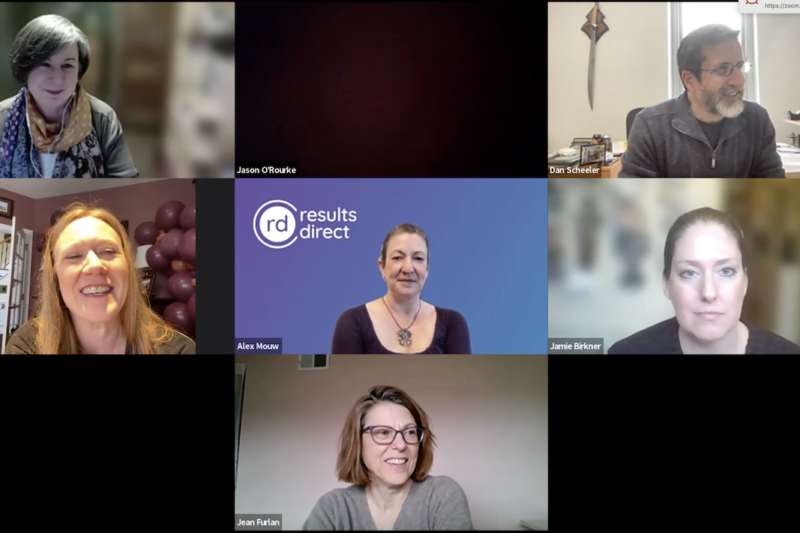TL; DR (also known as takeaways): Your culture may be standing in the way of…

It’s easy to tell when an organization doesn’t have a content strategy. Here are some ways I’ve seen most often:
- Content doesn’t have a clear goal or audience
- Content created by different internal groups has a different voice and tone
- The organization’s website contains outdated, repetitive, or conflicting content
- The content includes internal-facing elements such as department mission statements and other background information that doesn’t help the audience achieve their goal
- E-newsletter subject lines contain jargon, or just the newsletter’s name and date
The inspiration for this blog post came from Frank Fortin in the weeks leading up to the ASAE Annual Meeting as we prepared for an interactive session about the ASAE Foundation content strategy research. I thought it would be fun to ask my online peers and colleagues to add their thoughts, and lots of people chimed in with their own smart observations. Thanks to all of them!
Which have you seen, and do you have any to add?
You know an organization doesn’t have a content strategy ….
When the audience can’t find what they are looking for or don’t know that you offer what they seek. — Frank Fortin, CAE, Senior Vice President, Communications and Member Engagement, American Pharmacists Association
When you keep reinventing the wheel instead of creating reproducible processes and frameworks.— Sarah Garnsey, content development and media project management, University Relations, Bryant University
When stakeholders keep revising their content because they don’t know when it is “good enough.”— Erica Jorgensen, Content Experience Lead, Microsoft
When people hide things by posting them to your intranet, because they know no one will ever find anything there. — Geri Modell, freelance content strategist and writer <–HM note: Ha ha – this is such a good one!
When you have any of these:
- Baffling inconsistency across channels.
- Bloated sites with loads of conflicting, outdated or inaccurate content.
- A siege of zombie content – all but dead (unvisited and unused for long periods) that hasn’t been killed off or archived.
- Needlessly complex and whimsical production/publishing processes.
- A lack of accountability.
- Being unable to maintain what you already have
— Karl Turner, Content Designer/Strategist and Copywriter, Useful Words
When you’re not using data to drive decision-making. — Helen Thompson Mosher, Vice President of Communications, National Active and Retired Federal Employees Association
When you have multiple systems/workflows that churn out redundant, low-quality content, a fragmented customer experience, and lack of data or customer research. — Shane Ebbert, Content Principal, Peerless LLC
When you have lots of content produced with no purpose or place. Or measurement! — Mary Sabotkoski, Content Strategy Lead, Product Operations, Open University Australia
When assets are duplicated, not measured, and have different tones of voice. — Marc Phillips, Content Director, IBM Watson Health
When you can come across outdated content on the website, or when the site map has no plan behind it —Holly Roberts, Chapter Lead — Content Design, Spark New Zealand
When there are multiple products/pieces of content on the same topic, coming from different parts of the organization. – Meena Dayak, VP, Integrated Media & Communications, American Public Power Association
When you hear any or all of these statements from colleagues or clients:
- We have a LOT of content, and we’re not sure what we need to keep and what we need to trash. We also find it hard to get rid of things because what if getting rid of one thing breaks something else?
- We want to create infographics for each page, because our CEO thinks they drive engagement.
- We don’t even know what content exists on the website.
- When we have to update something, we have to update it in 5 (or 10, or 50) places
- No one really manages our content. People mostly just submit their content requests, and our marketing specialist publishes them.
- Customers find different information – and different instructions – depending on where they go on the website
— Meghan O’Meara, Director, Content Strategy, Perficient Digital
When
- You have duplicate content
- There are conflicting messages in duplicated
- Content is based on the organization’s internal structure and language, not that of the audience.
— Anoushka Ferrari, User Experience Architect, BBC
When you have
- Inconsistent messaging
- Multiple styles and tones
- Lack of content atomization
- No content calendar
— Alyssa Fox, Senior Director, Partner Marketing, Alert Logic
When you have
- Clearly inconsistent messages depending on who produced the piece
- Content driven solely by ad campaigns
- Editors that focus more proofreading than editing
— Susan Westwater, CEO and Co-Founder, Pragmatic Digital
If you’re struggling to make decisions on which content to pursue and which to let alone, it’s time for a content strategy. Yes to everything isn’t a strategy, it’s an inhibitor. — Caroline H. Deveau, Director of Digital Communications, Trinity College
When
- Content ideas are just plucked out of nowhere, for example, “We think a blog post on XYZ would be good!” but ignore data that can inform topic decisions.
- Content is what the organization wants people to read and not what their customers want to read.
- An organization abandons a channel (email, Twitter etc.) because “it doesn’t work for us” but haven’t done any actual research to determine if this is the case or not.
— Ellen Forster, Owner, Content by the Sea
When you create a new website every time a new topic arises. — Becky Breeden, Director of Digital Strategy, fusionSpan
When your organization has ambitions of personalized campaigns across channels, yet has tagged no/little content with keywords/metadata. And when you ask whether there is an enterprise-level, or at least web channel taxonomy to be applied to such tagging and you are met with blank stares, or with the question: What is a taxonomy? — Ken Wasetis, Partner, MarTech Strategy, ICF Next
So….if your organization is suffering from a lack of content strategy, please contact us to start on your journey!


This Post Has 0 Comments